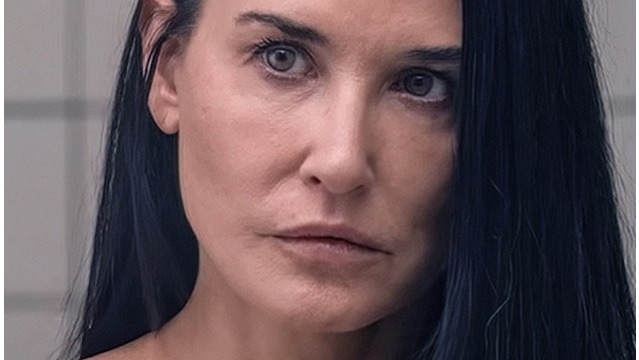
Note: This article offers a psychiatrist’s perspective on the psychological themes in the film The Substance. It discusses the movie’s imagery and ideas, but is written to help readers understand its deeper meaning—not to promote or sensationalize it.
In The Substance, the horror is not only on screen—it is symbolic. The film follows a woman (played by Demi Moore) who uses a mysterious injectable to reclaim her youthful appearance. Beneath the skin‑deep transformation lies a profound psychological split, touching on aging, identity, and the dangers of living with a divided sense of self.
Splitting the Self: Youth vs. Aging
Psychologically, the protagonist exhibits what Otto Kernberg would describe as borderline personality organization. Her sense of self is fragmented—she cannot reconcile the woman she once was (beautiful, admired, successful) with the woman she is now (aging, uncertain, irrelevant in her eyes). Instead of an integrated identity, she splits: the all-good, glamorous past self is revered and idealized, while the all-bad present self is rejected and demonized.
In the film’s imagery, this split becomes literal: the beautiful version of herself returns as a violent, hungry doppelgänger—an image that echoes the psychological projection and splitting described in our post Violence of the “Younger Self”. She is both the princess and the monster. This is a dissociated “fairy tale” turned nightmare—an out-of-body experience in which her current self is pursued by the very fantasy she thought would save her.
The Psychological Cost of Living in the Past
The refusal to integrate past and present manifests as identity diffusion. Without her career, youth, or beauty, she no longer knows who she is. The fantasy of the past becomes a prison, not a foundation. Rather than evolving, she regresses—living in a memory instead of the present moment. Her desperate clinging to the past is symbolized in haunting visual details, such as her horror at seeing her aging hands—fragments of the reality she cannot escape.
This split is common in individuals who associate their self-worth with transient qualities like appearance, fame, or professional status. When those fade, they experience what feels like annihilation. But this view is distorted—it is the splitting that causes suffering, not the aging itself.
Integration as the Path to Wholeness
A psychologically healthier response would be integration. This means acknowledging both the light and shadow, the glories of youth and the realities of aging, the pleasant and the painful. Instead of banishing the present in favor of the past, one can hold both together and find meaning in their union.
Therapy for aging-related identity issues often focuses on:
- Recognizing the split
- Building narrative continuity
- Creating new meaning
She saw herself as not having value anymore; without her career she did not know who she was—a struggle not uncommon in high-achieving individuals facing transition or burnout, as described in Thriving, But Tired.
In the case of the protagonist, fulfillment could come not from trying to relive youth, but by sharing her gifts with others—perhaps as a dance teacher, studio owner, or mentor. She could integrate both her past and present into a new, evolving self—not one chasing the mirror, but one offering light to others.
Aging with Self-Worth and Purpose
There is no true failure in aging—only a failure to see its potential. Psychological wholeness comes not from rejecting who we are becoming, but from understanding who we have always been.
As we age, we can continue to discover ourselves in other areas—new opportunities we might enjoy and share with others. This is a key theme in our article on Emotional Wellness in Aging.
When youth is placed on a pedestal and the present is rejected as meaningless, we lose access to the richness of now. But with support—through therapy, community, or introspection—we can shift from fragmentation to fulfillment.
The Substance ends in horror, but it also offers a cautionary tale: when we reject our evolving selves, we suffer. But when we integrate, we grow.
As we age, the invitation is not to remain young forever, but to become whole. To find meaning not just in who we were—but in who we are becoming.
Dr. Anna Wachtel, MD
Psychiatrist – Upper East Side, NYC
📞 (212) 534-8816
Offering in-person and telepsychiatry sessions for emotional wellness, anxiety, and life transitions.